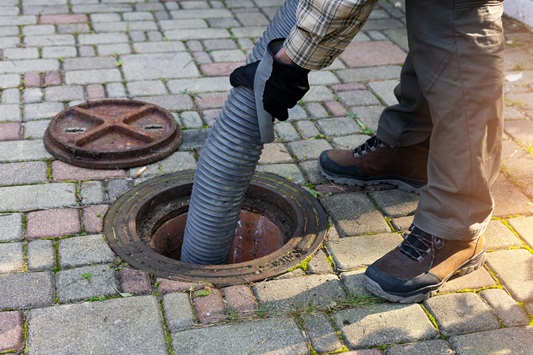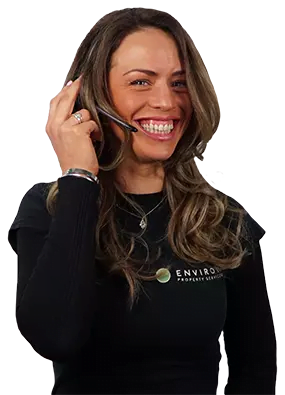Other Water Companies Serving London and Their Responsibilities
While Thames Water covers much of London, Affinity Water and SES Water focus on water supply and coordinate with Thames Water on sewerage and surface-water matters. Each provider follows national rules, but boundaries and contact routes differ.
Confirm your serving company to avoid misdirected reports and receive prompt assistance.
When to Call Environ Drainage Services for London Drainage Issues
If a blockage or defect is within your boundary, internal pipe, private drain, collapsed section, or privately owned shared drain, Environ can diagnose and resolve it. With 24/7 unblocking, same-day response, CCTV surveys, and high-pressure jetting, we address root causes, not just symptoms.
Acting early with Environ helps prevent water damage, odors, and structural risks. Our engineers provide transparent quotes and reliable repairs for residential and commercial needs.
Environ’s Support for Blocked Private Drains and Emergency Unblocking
Environ’s rapid-response engineers use high-pressure jetting for grease, oils, and debris, and sectional rods for compacted obstructions. Our 24/7 teams minimise disruption. After clearance, you receive a condition report with weak-point findings and repair recommendations.
This proactive approach reduces repeat call-outs by addressing underlying issues such as collapses or root ingress.
Using CCTV Drain Surveys to Determine Drainage Responsibility
A CCTV survey records your network and shows where private drains connect to laterals or public sewers. This evidence resolves liability disputes and guides targeted repairs. Environ’s technology captures high-resolution footage to identify defects, blockages, and misalignments.
A detailed survey report helps owners, landlords, and businesses work with water companies or neighbours on repair obligations.
Environ's Drain Repair and Maintenance Services for Property Owners
Environ specialises in drainage repairs, sectional lining, and full replacements, often without extensive excavation. Our preventive maintenance includes scheduled jetting, root cutting, and interceptor cleaning to maintain flow and extend drain life.
Property owners benefit from clear cost estimates, minimal disruption during work, and a documented service history that can be useful for insurance claims or property transactions.
Commercial Benefits of Environ’s Specialist Services
Commercial clients receive bespoke plans covering interceptor maintenance, grease-trap servicing, ductile-iron relining, and compliance checks. Scheduled visits and rapid unblocking keep operations running. Detailed reports support audits and compliance.
Partnering with Environ delivers consistent service, less downtime, and a single point of contact.
Common London Drainage Issues and Who’s Responsible
Blocked drains, collapsed pipes, root ingress, and fatbergs are common in London’s ageing network. Responsibility depends on location, ownership, and cause. Owners handle private-boundary issues; water companies handle public sewers and transferred laterals. Coordination prevents environmental damage and maintains performance.
Promptly identifying who is responsible and engaging the correct service provider, whether public or private, ensures efficient resolution and minimises further risks.
Causes of Blocked Drains and How to Identify Responsibility
Common causes include grease, sanitary products, tree roots, and sediment. Obstructions within your boundary indicate a private drain issue; those in road gullies or manholes beyond your boundary suggest a public sewer problem.
CCTV surveys or tracer-dye tests confirm location and ownership. Use these indicators to contact Thames Water for public sections or a specialist for private segments.
Drain Repairs and Maintenance Responsibilities in London
Property owners are liable for private drains and internal pipework. Water companies maintain public sewers and most laterals. Privately owned shared drains require joint responsibility. Local authorities manage highway surface-water gullies.
Clear boundaries and current maps ensure correct maintenance and cost allocation. Engaging a specialist like Environ prioritizes private-section servicing, reduces liability, and protects property integrity.
Emergency Drainage Services for Private and Public Drains
For private drains, providers like Environ respond quickly using drain rods, water jetting, and sectional inspections to restore flow. Report public-sewer emergencies directly to the water company, which works to statutory timeframes.
Collaboration between public crews and private specialists speeds complex resolutions and limits impact. Prompt reporting and accurate identification of ownership ensure that the correct teams are mobilised without unnecessary delays.
Legal and Insurance Considerations for London Drain and Sewer Responsibility
UK legislation and the 2011 transfer regulations define public and private liabilities. Insurance policies vary in coverage for blockages, collapses, and pollution. Understanding these frameworks helps avoid unexpected costs and support valid claims.
Review policy terms and ensure liability clauses align with current law to prevent disputes and secure adequate protection.
Home Insurance Coverage for Drain and Sewer Issues
Standard policies often cover sudden, accidental damage to underground drains within your boundary, but exclude gradual deterioration or neglect-related blockages. Some offer add-ons for emergency clearance or repairs. Review exclusions (e.g., roots, fatbergs, collapsed pipes) to confirm coverage.
Professional survey reports and maintenance records can strengthen your insurance claims when issues fall within the policy's terms.
2011 Sewer Transfer: Effects on Shared and Lateral Drains
The 2011 regulations transferred many shared and lateral drains to water-company ownership, reducing private maintenance duties. This simplified joint ownership, unified networks, and clarified liability maps.
Owners now focus on wholly private drains and internal pipework; water companies manage transferred sections. Accurate documentation of the transfer points is essential for insurance purposes and future property transactions.
Frequently Asked Questions About London Drain and Sewer Responsibility
Common questions focus on who’s responsible, the water company or the owner, especially for blockages outside the front door or in communal areas. Map pipe locations, check boundary plans, and use CCTV surveys to clarify responsibility and resolve issues quickly.
Addressing these queries helps owners and managers navigate responsibilities with confidence.
Who is Responsible for a Blocked Drain Outside My House in London?
If a blockage is outside your boundary, in a lateral or public sewer, the water company is responsible and responds under statutory timeframes. If it’s within your land (e.g., garden drain or driveway connection), you’re responsible; a specialist like Environ can unblock and repair.
Is Thames Water Responsible for Shared Drains in London?
Under the 2011 transfer, Thames Water assumed responsibility for many shared drains connecting multiple properties to the public network. Untransferred shared drains remain a collective owner responsibility. Confirm ownership via boundary records or professional surveys to avoid misdirected reports.
What is the Difference Between a Drain and a Sewer in the UK?
In the UK, a drain connects one property to a lateral or shared section; a sewer carries wastewater from multiple properties to treatment. Drains within private land are the owner’s responsibility; sewers are maintained by water companies. This hierarchy clarifies liability.
Who is Responsible for Drains in a Block of Flats in London?
In blocks of flats, freeholders/management handle internal communal drains and stacks; tenants handle pipework within their flats. Private drains serving a single flat are typically the owner’s/landlord’s responsibility; shared runs are managed by the agent. Service agreements and regular surveys keep systems reliable.
When Did Drain Ownership Change in the UK and What Does It Mean?
In October 2011, many private shared and lateral drains were transferred to water company ownership under the Water Industry Transfer Regulations. The change streamlined maintenance, reduced disputes, and strengthened public sewers. Owners now focus on wholly private sections and internal pipework.
Understanding this timeline helps clarify which organisation to contact and how responsibilities have evolved.
London’s drainage network relies on clear duties across owners, water companies, and local authorities. By knowing the difference between private drains, laterals, and public sewers, you can direct requests correctly and avoid delays.
Environ can diagnose, unblock, and repair private systems with 24/7 response, CCTV surveys, and lasting solutions. For transparent quotes and tailored advice, contact Environ Drainage Services.











